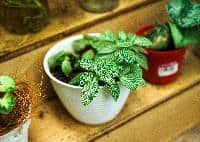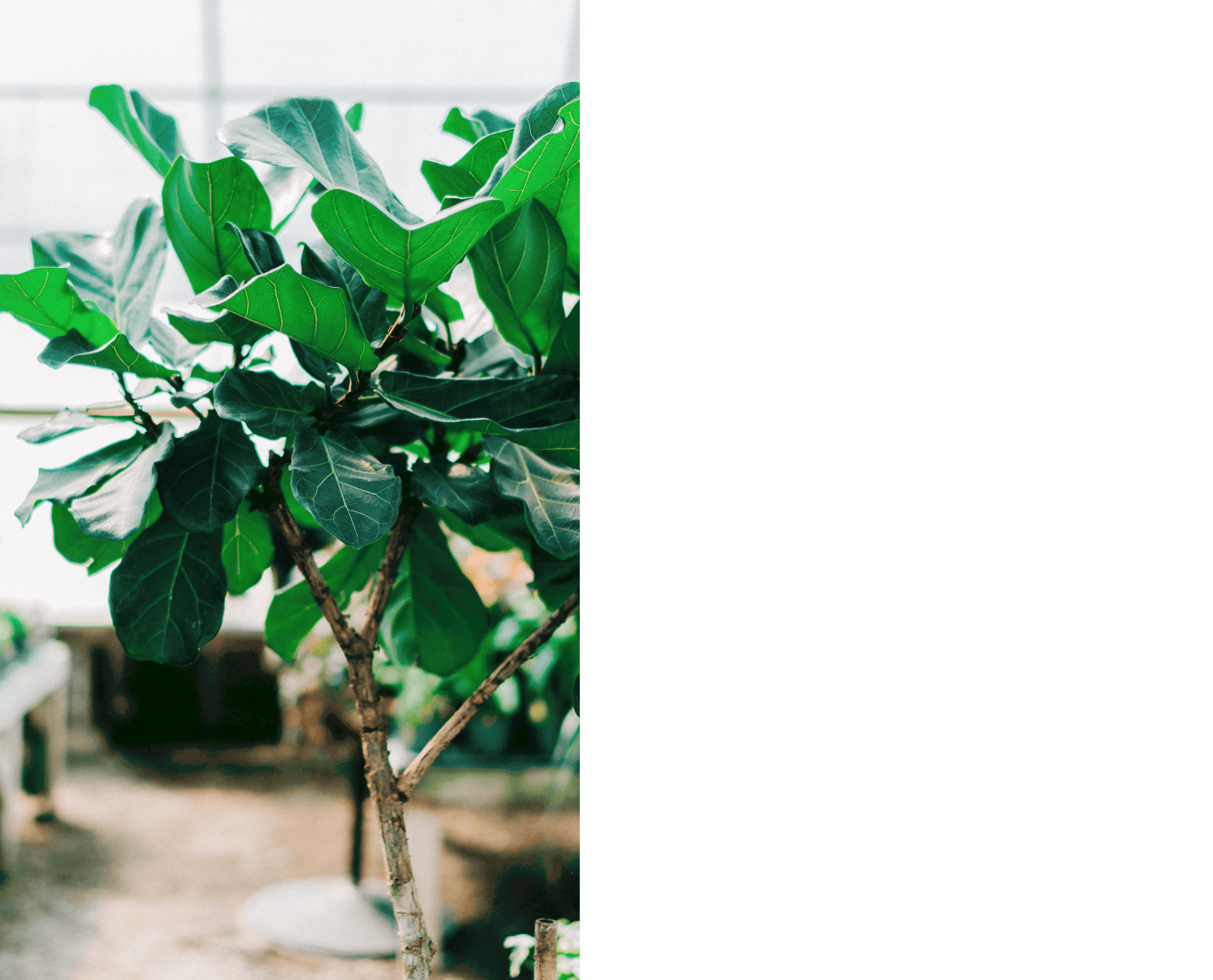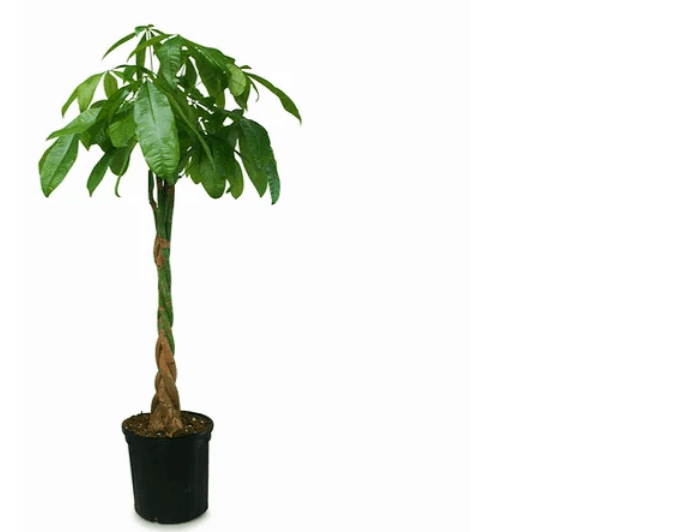Plants are a home-decor staple—and for good reason
Research shows that indoor plants help to purify air, improve sleep and curb stress. They’re also extremely versatile from a design perspective, and can transform any space into a vibrant sanctuary.
Being a plant caretaker might seem like a challenging task, but it’s actually easier than you think. Whether you’re somewhat new to keeping plants in the house or are a first-time indoor plant owner, we’re sharing a simple guide to creating the perfect green oasis in your home.
1. Determine plant size and location
 Photo by Pineapple Supply Co. on UnsplashBefore you begin your indoor plant search, determine where in your home you want your plants to go. If you’re looking for a larger plant, keep in mind it will need access to more sunlight, so opt for a space with windows and natural light. Even if you're selecting a small desk cacti, it will need to be located where there is sunlight.
Photo by Pineapple Supply Co. on UnsplashBefore you begin your indoor plant search, determine where in your home you want your plants to go. If you’re looking for a larger plant, keep in mind it will need access to more sunlight, so opt for a space with windows and natural light. Even if you're selecting a small desk cacti, it will need to be located where there is sunlight.
2. Consider temperature
 Photo by Kelly Sikkema on UnsplashSome plants thrive better in warmer months than colder ones. Before making your selection, factor in when you’re buying. For example, orchids and the Sansevieria (snake plant, pictured) are perfect for spring, as they don’t require direct sunlight. The Aglaonem, or Chinese Evergreen, survives best in the cooler months, as it can take in less sunlight and still maintain its lush green colour and large size.
Photo by Kelly Sikkema on UnsplashSome plants thrive better in warmer months than colder ones. Before making your selection, factor in when you’re buying. For example, orchids and the Sansevieria (snake plant, pictured) are perfect for spring, as they don’t require direct sunlight. The Aglaonem, or Chinese Evergreen, survives best in the cooler months, as it can take in less sunlight and still maintain its lush green colour and large size.
3. Research is everything
 Photo by Army Virmansyah on UnsplashPots and Planters
Photo by Army Virmansyah on UnsplashPots and Planters
When you purchase a plant from a store, it will probably come with its own pot or a container with drainage holes at the bottom. Many new plant owners will opt to replace this plastic pot with a decorative one. When purchasing a new pot or planter, choose one that is the same size or an inch or two larger than the plant. If there’s too much space and soil, you risk over-watering the root system and drowning the plant. Repotting your plants is fine overtime, but it should be a gradual step.
Soil
Potting soil should contain the right nutrients and ingredients. The most common ingredients for indoor potting soil are minerals like peat and perlite, along with shredded pine bark or something similar. These mixes help to absorb moisture and provide plenty of aeration. You can purchase them from any garden store or Home Depot. Keep in mind that if you’re selecting an expensive or rare plant, it might require special soil with unique ingredients and fertilization. Ask your garden store about these requirements.
4. Factor in your lifestyle
 Photo by Margarita Terekhova on UnsplashBefore you commit to buying a plant, you’ll want to determine beforehand how much time you’re willing to spare to care for it. When it comes to plants that are low-maintenance, cacti and succulents are a particular favourite. They don’t require as much watering, they look great and they thrive in warm temperatures and dry air, perfect for any home.
Photo by Margarita Terekhova on UnsplashBefore you commit to buying a plant, you’ll want to determine beforehand how much time you’re willing to spare to care for it. When it comes to plants that are low-maintenance, cacti and succulents are a particular favourite. They don’t require as much watering, they look great and they thrive in warm temperatures and dry air, perfect for any home.
If you’re looking for something a bit larger and more vibrant, here are a few great options...
1. Asparagus Fern
 WildwoodThis fluffy plant can survive even the laziest plant owner. Technically, it’s not a fern, which is probably why it’s able to survive neglect and wear-and-tear better than most. This plant adapts to any amount of light and requires moist soil.
WildwoodThis fluffy plant can survive even the laziest plant owner. Technically, it’s not a fern, which is probably why it’s able to survive neglect and wear-and-tear better than most. This plant adapts to any amount of light and requires moist soil.
2. Fiddle Fig Leaf
 Photo by Mike Marquez on UnsplashAside from its lush leaves, these stylish and contemporary plants thrive in any amount of light, but actually don’t require direct sunlight. To maintain a Fiddle Fig Leaf, give this plant plenty of water in the summer and reduce watering in the winter.
Photo by Mike Marquez on UnsplashAside from its lush leaves, these stylish and contemporary plants thrive in any amount of light, but actually don’t require direct sunlight. To maintain a Fiddle Fig Leaf, give this plant plenty of water in the summer and reduce watering in the winter.
3. Guiana Chestnut
 Plant TherapyKnown colloquially as the Money Tree, the Guiana Chestnut stands out for its signature braided trunk and is a fan favourite for modern lofts and trendy apartments. To care for this plant, keep it somewhere with access to bright (indirect) light and water frequently.
Plant TherapyKnown colloquially as the Money Tree, the Guiana Chestnut stands out for its signature braided trunk and is a fan favourite for modern lofts and trendy apartments. To care for this plant, keep it somewhere with access to bright (indirect) light and water frequently.
There you have it! Being a plant parent is easier than you think. It just takes a bit of research and a few simple steps to add more green to your space.

